Swine and Chicken Inventory
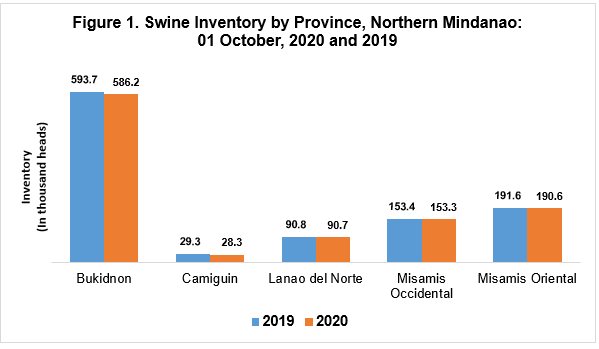
Of the total swine inventory, 58.2 percent were raised in backyard farms while the rest were in commercial farms.
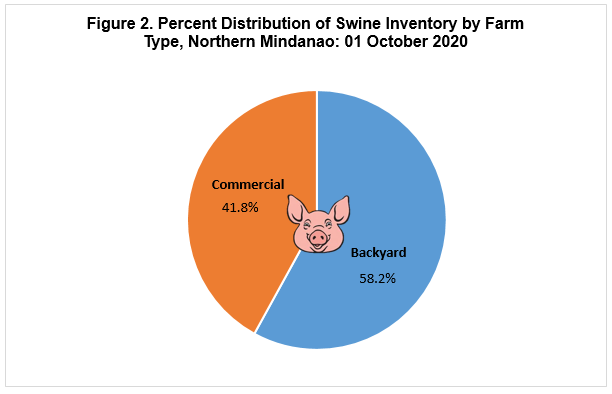
Inventory of chicken in the region decreased by 0.1 percent, that is, from 23.53 million birds on 01 October 2019 to 23.51 million birds on 01 October 2020.
Bukidnon recorded the highest inventory of chicken at 11.353 million birds, with an increase of 2.2 percent year-on-year. Camiguin had the lowest inventory though it registered the highest growth of 10.3 percent. Misamis Occidental also recorded a positive growth of 0.7 percent, while Lanao Del Norte and Misamis Oriental recorded a decrease of 4.1 percent and 2.5 percent, respectively.
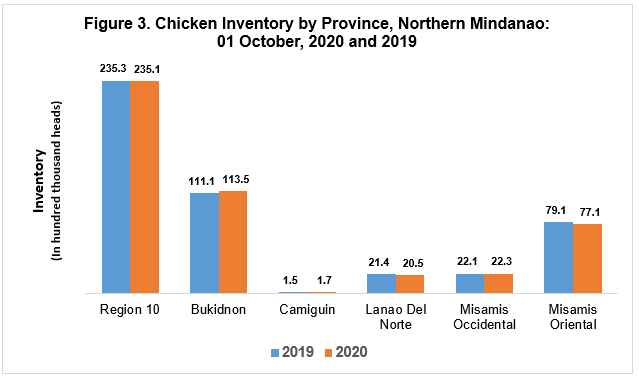
Broiler chicken, and native or improved chicken accounted for more than 80 percent of the chicken inventory of the region.
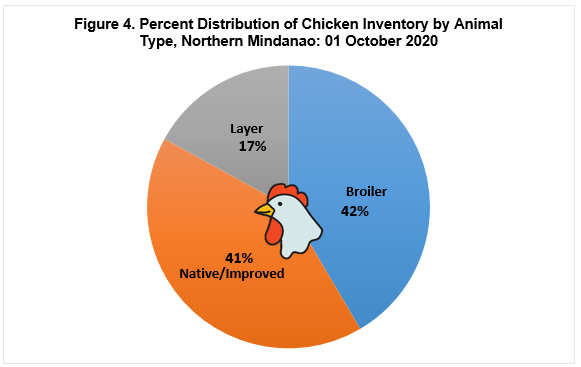
Hog and Chicken Production
Hog production in the region for the third quarter of 2020 reached 50,101 metric tons, an increase of 10.5 percent from the previous year’s production of 45,359 metric tons.
On the other hand, chicken production in the region decreased by 7.0 percent, that is, from 38,101 metric tons in the third quarter of 2019 to 35,442 metric tons in the same quarter of 2020.
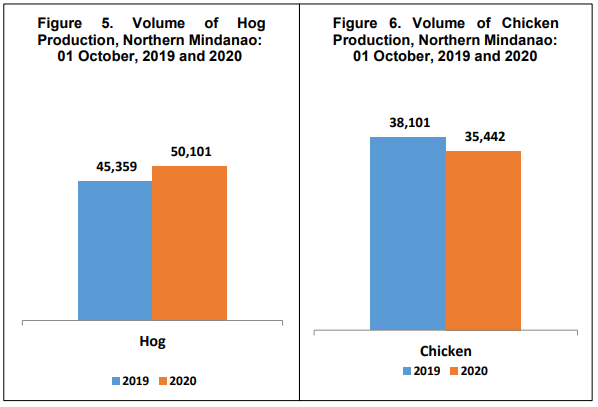
Chicken Egg Production
Chicken egg production of the region increased by 9.3 percent, from 9,976 metric tons in the third quarter of 2019 to 10,905 metric tons in the third quarter of 2020.
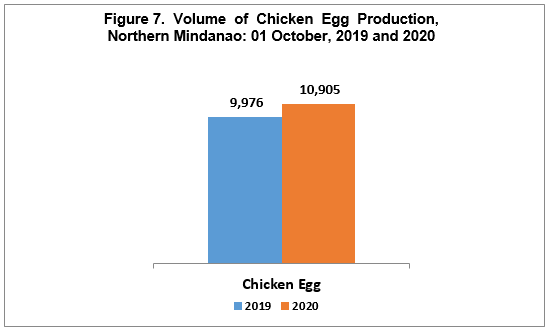
RUBEN D. ABARO, JR., CESE
Regional Director
SBB/JSE/RTT
For further inquiries, you may contact:
Statistical Operations and Coordination Division
Philippine Statistics Authority-Regional Statistical Services Office 10
Limketkai Module 2 BPO & Cyber Park Building
Limketkai, Cagayan de Oro City
Email: psaregion10@gmail.com
Telefax: (088) 856-4778
Website: http://rsso10.psa.gov.ph
TECHNICAL NOTES
The data for this special release were collected by the Philippine Statistics Authority (PSA) through the two (2) major surveys, namely:
1) The Backyard Livestock and Poultry Survey (BLPS) which covers one (1) of the four replicate samples of the Palay and Corn Production Survey (PCPS); and
2) The Commercial Livestock and Poultry Survey (CLPS). A livestock farm is considered commercial when its operation satisfies at least one of the following conditions: a) at least 21 heads of adults and zero young, b) at least 41 heads of young animals or c) at least 10 heads of adults and 22 heads of young animals. A poultry farm is considered commercial when its operation satisfies at least one of the following conditions: a) at least 500 layers, b) at least 1,000 broilers or c) 100 layers and 100 broilers, if raised in combination. A duck farm is considered commercial if it has a raising capacity of at least 100 birds of duck regardless of age.
Data collection for swine and chicken is done quarterly while data collection for goat, cattle, carabao, and duck is done semi-annually. BLPS is conducted during the first seven (7) days of the first month after the reference quarter while CLPS is conducted during the last eight (8) days of the last month of the reference quarter or semester.
CONCEPTS AND DEFINITIONS
Volume of production refers to the volume of locally-raised animals disposed for dressing including those which were shipped out to other regions/provinces for slaughter or dressing. This is expressed in thousand metric tons, liveweight
Inventory refers to the actual number of animals present in the farm as of the specific reference date.
Farmgate price refers to the price received by raisers for their produce at the location of farm. Thus, the marketing cost such as the transport and other marketing costs (if any) incurred in selling the produce are not included in the farmgate prices.

